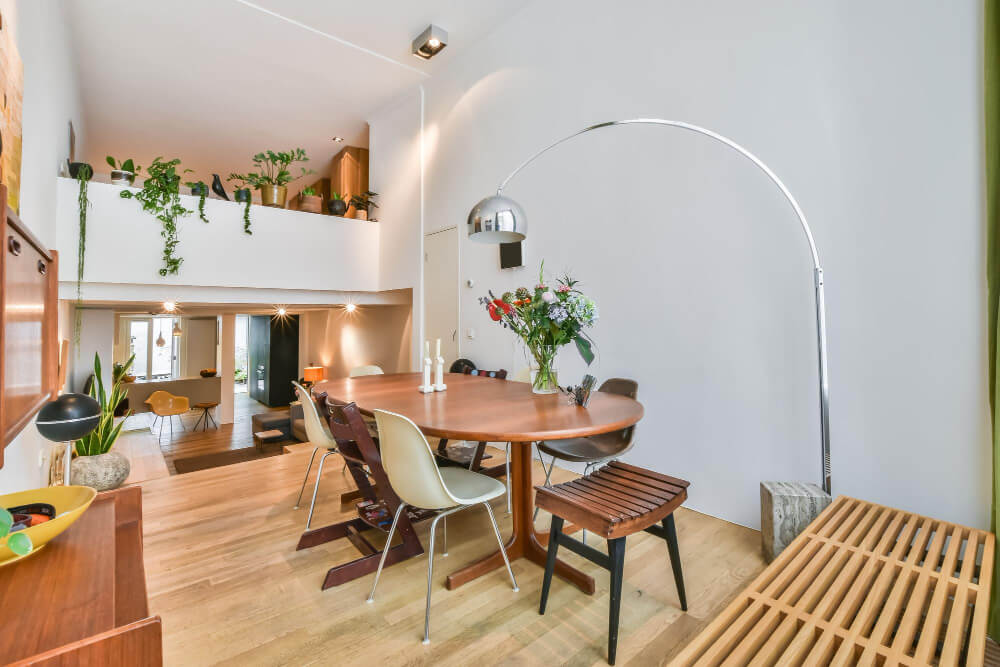Builder’s Inventory Homes: Your Fast Track to Homeownership
Updated Fri, Dec 5, 2025 - 16 min read
Top blog articles
When buying a new home, many buyers face the choice of building their dream home from the ground up or purchasing a home that’s already built. One option that often goes overlooked is builder’s inventory homes, homes that are move-in ready and offer a quick and convenient buying process. If you’re relocating for work, need to move before the school year starts, or simply want to avoid the stress of overseeing construction, inventory homes might be your perfect solution.
In this comprehensive guide, we’ll explore what builder’s inventory homes are, their benefits and disadvantages, who should consider buying them, and why they might be the ideal choice for your next home purchase.
What Is a Builder Inventory Home?
A builder’s inventory refers to homes that have been constructed by a builder without a specific buyer in mind. These homes are also known as spec homes (short for speculative homes) or move-in ready homes. According to Today’s Homeowner, builders design these houses based on popular floor plans and finishes, ensuring they will appeal to a broad range of buyers.
By keeping a stock of inventory homes, builders can offer homes for sale to buyers who need to move quickly or prefer not to go through the entire building process involved in custom-built homes. Think of it this way: while custom homes are made-to-order like a tailored suit, spec homes are like buying a well-fitted outfit off the rack, high quality, immediately available, and designed to meet most buyers’ needs.
What Are Inventory Properties?
Inventory properties are homes or real estate assets that are already built and available for immediate purchase or leasing. In the context of residential real estate, these are typically new homes constructed by builders (also called builder’s inventory or spec homes) that are not tied to a buyer yet.
In commercial real estate, inventory properties might refer to available office spaces, retail units, or other real estate assets that are ready for occupancy or sale. For residential buyers, inventory homes represent newly constructed properties that combine the benefits of new construction with the convenience of immediate availability.
Top 10 Home Builders in the United States
The top homebuilders vary based on factors like the number of homes built, revenue, and market influence. As of the most recent rankings, these are some of the top homebuilders in the U.S.:
- D.R. Horton – One of the largest builders, known for its wide range of home styles and price points.
- Lennar Corp. – A major player offering a variety of housing options, including single-family homes and multi-family developments.
- PulteGroup – Known for building homes for various demographic groups, from first-time buyers to active adults.
- NVR, Inc. – Operating under brands like Ryan Homes, NVR is a major builder focusing on the East Coast and Midwest.
- KB Home – A nationwide builder that allows for customizable homes and emphasizes energy-efficient construction.
- Taylor Morrison – A well-established builder known for its upscale and luxury homes.
- Meritage Homes – Specializes in energy-efficient homes, making them attractive to environmentally conscious buyers.
- Toll Brothers – Focuses on luxury homes with high-end finishes and customizable options.
- Century Communities – Builds single-family homes and townhomes across the U.S., offering affordable options.
- Beazer Homes – Known for its commitment to energy efficiency and quality construction using modern building materials.
Understanding Months of Inventory in Real Estate
A term often heard in real estate is “months of inventory,” which refers to the amount of time it would take to sell all the homes for sale on the market at the current sales pace. This metric is crucial for understanding market conditions.
- Less than 5 months of inventory = Seller’s market, meaning buyers may face higher prices and less negotiating power
- More than 6 months of inventory = Buyer’s market, where prices may soften, giving buyers more opportunities to get a good deal
According to New Home Star, the national market share for new homes was around 16.5% at the close of 2024, with some markets seeing new homes account for 30% to 50% of sales due to the limited supply of existing homes. Understanding your local market’s inventory levels can help you time your purchase strategically.
Who Should Buy an Inventory Home?
Buying an inventory home is an excellent option for a wide variety of home buyers, but it is particularly beneficial for:
First-Time Buyers: First-time buyers who find the buying process daunting may find inventory homes appealing since the builder handles most of the decisions. You won’t need to navigate the overwhelming building permit process or make hundreds of construction decisions.
People Who Need to Move Quickly: Those relocating or moving into a new city don’t have time to wait for a home to be built. Whether you’re starting a new job or need to settle before the school year begins, inventory homes solve your time crunch.
Buyers Who Want a Turnkey Home: Inventory homes are great for people who prefer a move-in ready house without the hassle of overseeing a home from the ground-up building process. Everything from electrical panels to flooring is already complete and inspected.
Buyers in Competitive Markets: According to Felix Homes, spec homes can be especially advantageous to buy in a competitive market. If you’re trying to purchase in an area with high demand and limited inventory, a spec home may be your best option.
Advantages of Buying an Inventory Home
Buying an inventory home comes with several advantages, particularly for those who don’t have the luxury of time or don’t want to deal with the complexities of building a home from scratch.
1. Quick Move-In
One of the biggest advantages of purchasing an inventory home is the ability to move in quickly. Since the home is already built, the closing process can happen fast, allowing you to move in almost immediately. This is ideal for people relocating for work or those who have sold their existing home and need to find a new place quickly.
2. Reduced Stress
Building a newly built home from scratch can be overwhelming. The number of decisions required (choosing materials, finishes, layouts, and more) can cause stress. With an inventory home, these decisions have already been made, allowing buyers to focus on other aspects of the buying process.
3. You See What You Get
When buying an inventory home, you can physically tour the completed house, so there are no surprises. You can walk through the property, inspect the quality of construction, and see the actual layout and finishes. In contrast, when building a custom-built home, you may only have floor plans and visualizations to guide you.
Walnut Cove Realty notes that with spec homes, there are no hidden costs or surprises. The builder will be completely transparent with the cost of materials and may provide you with current and verifiable appraisal values.
4. Incentives from Builders
Builders often offer financial incentives to buyers to help them close quickly on inventory homes. These may include reduced prices, upgraded features, or assistance with closing costs, making it an attractive option compared to starting the building process from scratch.
If you’re wondering about financing options for your purchase, builders may also connect you with preferred lenders who offer competitive rates.
5. Established Communities
Often, builder’s inventory homes are built in established neighborhoods where you can already see how the community looks and feels. This provides a level of certainty that you don’t get when buying a newly built home in a developing area. You can evaluate nearby upcoming construction projects and understand how the neighborhood is evolving.
6. Brand-New Quality
According to Simonhouses, inventory homes are almost brand new with no one having lived in them. You get to be the first inhabitants, enjoying modern construction techniques, energy-efficient features, and the latest building codes, all while avoiding the wait time of custom construction.
Disadvantages of Inventory Homes

While inventory homes offer plenty of advantages, there are a few drawbacks that you should consider.
1. Limited Customization
One downside to inventory homes is that they offer limited customization. Because the house is already built, you won’t have the opportunity to make significant changes to the floor plan or choose custom finishes. Today’s Homeowner notes that if you have clear ideas on what you want in your future home, this lack of control is the biggest downside of buying a spec home.
If you’re someone who dreams of a truly personalized dream home, this may not be the right option for you. However, many buyers find that high-quality spec homes meet most of their needs without the stress of making 400,000+ decisions that come with custom building.
2. Potential for Higher Costs
Depending on the builder, an inventory home may be more expensive than if you were involved in the construction process from the start. Builders may have added premium features or finishes to the home that weren’t necessarily requested, but they will be reflected in the price.
Spec homes generally cost less due to the reuse of common designs and bulk material purchasing, but luxury spec homes with high-end finishes can approach custom home pricing.
3. Older Trends or Finishes
If a spec home has been sitting on the market for some time, its finishes or design elements may feel outdated compared to the latest trends in newly built homes. However, this can work in your favor during negotiations, builders eager to move older inventory may offer significant discounts or upgrades.
4. Limited Location Choice
Another limitation of a spec home is that the builder has already constructed it in a fixed location. If you don’t like the homesite (Perhaps it backs up to a busy street or doesn’t have the view you want) you can’t choose a different plot within the community.
5. Less Negotiating Power on Price
Builders don’t like to offer big discounts on their new construction, as it sets a precedent that impacts the builder’s future pricing for other homes in the community. Builders generally won’t budge on their price unless the home isn’t selling as quickly as expected.
However, you may have more negotiating power on other aspects. Try negotiating on things like closing costs, upgrades, or included appliances rather than the base price.
Spec Home vs. Custom Home: Which Is Right for You?
The choice between an inventory/spec home and a custom home depends on several factors:
Choose an inventory home if you:
- Need to move within 1-3 months
- Want to avoid making hundreds of design decisions
- Prefer lower stress and hands-off involvement
- Want to see exactly what you’re getting before purchase
- It’s a competitive market with limited existing home inventory
Choose a custom home if you:
- Have 8-12 months or more to wait
- Want complete control over every design element
- Have specific needs (accessibility features, unique layout, etc.)
- Enjoy the building process and making selections
- Have found the perfect lot and want to build specifically for it
Building custom is becoming increasingly popular, with over 1,354,000 new residential construction houses in 2025 across the country, primarily because buyers want the freedom to personalize their homes exactly how they see fit.
Tips for Buying a Builder’s Inventory Home
If you’ve decided an inventory home is right for you, follow these tips for a successful purchase:
1. Research builders carefully: Look for builders with strong track records and positive reviews. Check with the Better Business Bureau and read recent customer testimonials.
2. Tour multiple communities: Don’t settle for the first inventory home you see. Compare different builders, floor plans, and neighborhoods to find the best fit.
3. Bring a real estate agent: While builders have their own agents, having your own agent (at no cost to you; the builder pays) ensures you have an advocate looking out for your interests. An experienced agent can also help you understand what information to verify about the property.
4. Inspect thoroughly: Even though it’s a new home, conduct a thorough inspection. Check for quality issues, incomplete work, or any defects before closing.
5. Review the warranty: Understand what the builder’s warranty covers and for how long. Typically, structural elements are covered for longer periods than appliances and finishes.
6. Negotiate smartly: If you can’t negotiate on price, focus on upgrades, closing cost assistance, or included features. Builders may be more flexible on these items.
7. Consider the timing: The best time to buy a spec home is usually at the end of the year when there are fewer buyers to compete with and builders are eager to meet annual sales goals.
8. Understand the neighborhood: Research upcoming construction projects nearby and understand how the area is developing. This can impact your future property value.
Read more: Why customer segmentation is essential for your business
Financing Your Inventory Home
Financing an inventory home is typically simpler than financing a custom build. Since the home is complete (or nearly complete), you can use a traditional mortgage rather than a construction loan.
Benefits of traditional mortgage financing for inventory homes:
- Lower interest rates compared to construction loans
- No progress payment complications
- Single closing instead of multiple closings
- Faster approval process
- More lender options
If you’re purchasing a spec home that’s still under construction but nearing completion, some lenders may still require construction-to-permanent financing. Discuss your specific situation with your lender early in the process.
How Inventory Homes Compare to Existing Homes
When choosing between a builder’s inventory home and an existing resale home, consider these factors:
| Factor | Inventory Home | Existing Home |
|---|---|---|
| Condition | Brand new, modern systems | May need repairs or updates |
| Customization | Limited, already built | Can be renovated after purchase |
| Timeline | Move in within weeks | Often immediate availability |
| Warranty | Comprehensive builder warranty | Typically sold as-is |
| Energy Efficiency | Modern, efficient systems | May have older, less efficient systems |
| Negotiating Power | Limited on price | Often more flexible |
| Neighborhood | Often new or developing | Established with mature landscaping |
The Impact of Location on Inventory Home Value
If you’re building a new house in an old neighborhood, valuation can be tricky. The same applies to inventory homes in established areas. Real estate appraisers compare the new home to other homes in the neighborhood, which can be challenging when your brand-new inventory home is surrounded by older properties.
The important thing is keeping in mind the character and flavor of the neighborhood. Inventory homes that conform to the area’s style while offering modern amenities often maintain strong value. Homes that look dramatically different from surrounding properties may face appraisal challenges.
Bottom Line
Whether you’re looking for a newly built home or want to avoid the time and effort involved in building a custom home, builder’s inventory homes can be a perfect middle ground. They offer a move-in-ready option for those who want a new home but don’t want to go through the building process.
With plenty of spec homes on the market, you can find a high-quality house that meets your needs without the long wait or stress. While there are some trade-offs, such as limited customization, the convenience and potential savings make buying an inventory home a strong option for many home buyers in today’s fast-paced real estate market.
The key is understanding your priorities. If you value time, convenience, and modern construction over complete customization, an inventory home delivers all three. Visit multiple communities, compare your options, work with a trusted agent, and don’t be afraid to negotiate on terms other than price.
Ready to find your perfect inventory home? Start by researching top builders in your area, touring their communities, and evaluating which spec homes best match your lifestyle and budget. Your dream home might already be built and waiting for you.
FAQs
What is the difference between a spec home and a model home?
A spec home is built by a builder without a specific buyer in mind, designed to appeal to a broad range of buyers and sell quickly. A model home is a furnished showcase property that the builder uses to display their work and design options. Model homes typically don’t become available for purchase until a community is near completion. Both are types of inventory homes, but models usually feature premium upgrades and furnishings.
Can I customize an inventory home?
Customization options depend on the construction stage. If the home is already complete, your customization options are very limited, perhaps limited to paint colors or minor finishes. If you purchase early in construction, you may be able to select from a few finish options or make minor modifications. However, major structural changes or floor plan alterations are typically not possible with inventory homes.
Are inventory homes cheaper than custom homes?
Generally, yes. Spec homes cost less due to the reuse of common designs and bulk material purchasing. However, luxury inventory homes with high-end finishes can approach or even exceed custom home pricing. The real savings come from reduced carrying costs (you’re not paying rent while waiting for construction) and fewer design fees.
How long does it take to close on an inventory home?
If the home is 100% complete, you can typically close within 30-60 days, similar to purchasing an existing home. If the home is still under construction but nearing completion, the timeline depends on how much work remains. Homes that are 90% complete might close in 60-90 days. This is significantly faster than the 8-12 months required for custom home construction.
What should I look for when inspecting an inventory home?
Even though inventory homes are brand new, you should still conduct a thorough inspection. Look for quality of finishes, proper installation of fixtures, functioning of all systems (HVAC, plumbing, electrical), any cosmetic defects, proper grading and drainage around the foundation, and completeness of all work. Hire a professional home inspector who specializes in new construction to catch issues before closing.
Do inventory homes hold their value?
Yes, inventory homes typically hold their value well because they’re brand new with modern systems, energy-efficient features, and comprehensive builder warranties. However, value retention depends on factors like builder reputation, neighborhood development, market conditions, and home maintenance. Homes in established or growing communities generally appreciate more consistently than those in areas with declining demand.
Can I negotiate the price of an inventory home?
Builders are typically reluctant to significantly reduce prices on inventory homes because it sets a precedent for the community and affects comparable sales. However, you may have more success negotiating in other areas: closing cost assistance, upgraded features or appliances at no additional cost, landscaping packages, or extended warranties. Your negotiating power increases if the home has been on the market for several months or if you’re purchasing at year-end when builders are trying to meet sales goals.
What warranties come with inventory homes?
Most reputable builders offer comprehensive warranties covering structural elements (10 years for major structural defects), mechanical systems (2-5 years for HVAC, plumbing, and electrical), and craftsmanship (1-2 years for finish work and cosmetic items). Review the specific warranty terms carefully and understand what’s covered, for how long, and what your responsibilities are for maintenance. Some builders also offer third-party warranty backing for additional protection.
Your opinion matters. Leave a comment









